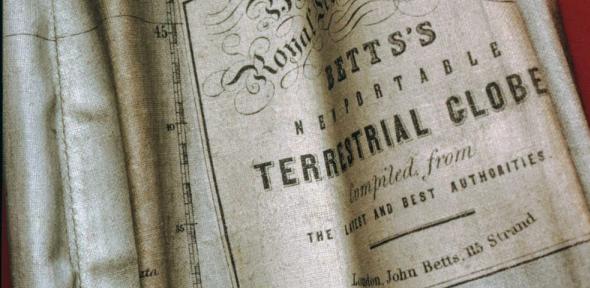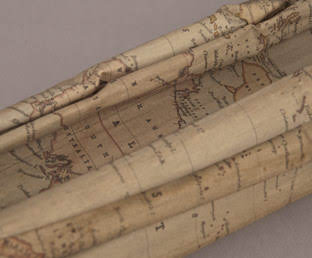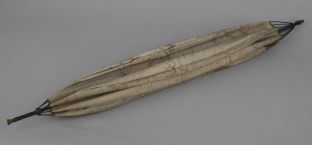The idea of an inexpensive, portable globe for teaching had been suggested in the late 18th century. Richard and Maria Edgeworth, a father-daughter pair of educationalists, asked in their 1798 publication Practical Education: "Might not a cheap, portable, and convenient globe be made of oiled silk, to be inflated by a common pair of bellows?" It was another forty years, however, until such a globe was first produced. Their request was answered in around 1830 with the invention of the balloon globe, an object made of fabric gores stitched together, which was inflated with an air pump. However, in 1850, John Betts designed an attractive alternative that did not require being inflated with a pump. Betts' "New Portable Globe", used an umbrella mechanism to support the gores in a spherical shape.

Several enterprising publishers issued globes that were readily portable. However, the resulting objects, such as dissected globes and pocket globes tended to be too small to include detail. John Betts (working from 1839, died c.1863) produced a globe that was both portable and large enough for the clear display of small features.
Portability

The Edgeworths had held that aids to geography teaching should be large, such that children could observe features easily, but also portable. Betts specialised in low cost educational products and was aware of such demands. When erected, Betts' globe probably attained a diameter of around 16 inches. However, for transportation, the umbrella mechanism could be released, and the collapsed globe packed into a thin carry case measuring around 30 inches in length.
Commercial success
Although Betts first made umbrella-type globes around 1850, the example in the Whipple Museum dates from around 1880. Betts was keen to keep his globe up-to-date, however, as the inscription on the Whipple version testifies. Betts declares that cartography has been "compiled from the latest and best authorities". Conscientious updating of the cartography, as well as the portability and large size of the globe, probably played a part in maintaining the market for Betts' umbrella globes. Indeed, the umbrella globes remained in demand. George Philip & Son, who took over Betts' firm sometime towards the end of the 19th century, continued to produce new editions into the 1920s.
Katie Taylor
Katie Taylor, 'Portable 'umbrella' globe', Explore Whipple Collections, Whipple Museum of the History of Science, University of Cambridge, 2009.


